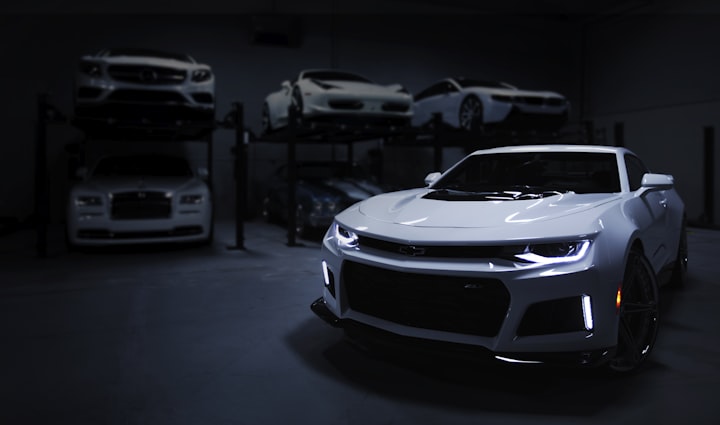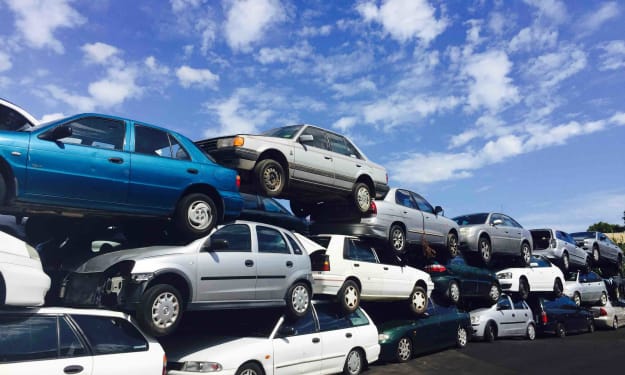10 Parts That Usually Break At New Cars
Do you have a new car?

Many people still claim that cars are no longer made as they used to be. That is, in the past, manufacturers focused on reliability and quality, but now they focus only on gadgets and equipment. Manufacturers have realized that they can no longer make cars that travel millions of miles and that they are much better off with parts and later overhauls. Here's what's wrong with new cars. Share on Facebook
Burners
In their blind race to comply with pollution regulations, carmakers have given birth to demanding and extremely complicated engines. Whether diesel or gasoline, today's turbo engines have complex high-pressure injectors that fail more often than a conventional injector.
EGR
Even if you bought a new diesel, because you go with it more in the city, at low speeds, because you do frequent starts and short walks, the engine has no chance to warm up to maximum capacity. So deposits are starting to form from the exhaust fumes and diesel. The gas recirculating EGR, another anti-pollution measure introduced with some compromises, is starting to fill up with calamine from the first 50,000 kilometers. I've heard of cases where diesel cars needed a new EGR at 15,000 kilometers. This is one of the reasons why many drivers prefer petrol cars.
Turbochargers
There are very few cars today, in any segment, that does not have a turbo engine. A turbocharger helps the engine to consume less and pollute in small quantities at low speeds, in the city for example, but it helps the driver to perform when he wants acceleration.
Some drivers, however, don't know how to drive a car with a turbo engine, they accelerate as they gave the key, they don't let the engine cool down, they stay with Start / Stop activated even when they go on the open road and after a forge on the highway at 160 I get stuck and the engine stops and so on. A turbo car has its advantages, but it also has higher costs.
Many new generation cars have problems with the turbine after about 30,000 kilometers, at which point they start to emit smoke and consume oil. If you don't take care of your turbine, no matter how new the car is, it will break down.
Throttle
Now all cars have an electronic throttle, it's not like in the past when Dacia had cable. That is, you press the pedal, a sensor reads how hard you press the pedal, then transmits them to a solenoid, or motor, near the damper how much to open.
Because things have become more complicated, but also because manufacturers are starting to make these plastic flaps, problems also arise. We must not forget that everything made of plastic in the car must be under the hood at over 100 degrees in summer, and that plastic works and eventually cracks.
But in the first 50,000 kilometers, there are other problems. Specifically, due to dust and moisture, it is no longer possible to read the pedal information correctly and the flap no longer opens or the solenoid locks. The moment when the car doesn't pull at all.
Sensors
Every modern car today has sensors everywhere: the cylinder head, the steering wheel, the accelerator, the EGR, and so on. For a modern engine to work properly, it takes about 240 moving or electronic elements to work perfectly, in unison.
In the old days, when the engine had a simple carburetor without electronics, things were clear and easy to repair. Now, if a sensor that broke was damaged because it was part of a problematic area mounted on your car bought 5,000 kilometers ago, the car enters emergency mode and is stuck in place. Too many sensors mean too many problems.
Diesel pump
Today's diesel engine runs at huge pressures, able to cut wood if you put it under the jet of an injector. Responsible for this high pressure is the high-pressure pump which is a complex element. The same causes as in other car parts mentioned above, respectively poor quality diesel and long intervals between overhauls lead to premature wear of the pump.
Any filth, dust, or dirt from the diesel will damage the pump. In some car brands, this pump is not even included in the warranty, because it is known that it will fall quite quickly, and in others, it will fall anyway until the driver travels 100,000 kilometers with his new car.
Double-clutch boxes
There are many cases among owners of new cars in the VAG group equipped with DSG transmission. There are many cases in all of Europe of cars even with 10,000 kilometers left with the car on the road because he left the box. And this is because a dual-clutch automatic transmission is very complex.
It's a high-performance box, nothing to say, but complicated, with many moving parts, all controlled by two or three computers. These, in turn, have connections to the sensors, to the car's ECU, and so on. It is enough for one tiny piece to give an error, that you stay with the car on the road. Fortunately, most of the problems with such boxes are electronic, not mechanical.
That is, you get the car on the platform, take it to the dealership, do the tricky people with the diagnosis and go home, after your vacation is ruined.
Parking sensors
We don't know how or what the new parking sensors are made of. They will be more precise, more sophisticated, they show you the distance on the display, it is clear that they are better. As far as I'm concerned. Because many people complain that after only 2–3 years of using their car, the new parking sensors have failed.
They are mounted in series and if one breaks, the others don't work either. The solution is to change the broken one, but how to identify it? The idea is that from the laundry, from the shocks, the sensors break down and you are good for the extra expense.
Start / Stop system
To further reduce pollution in cities, manufacturers have been forced to come up with new solutions. And the Start / Stop system is one of them. Stop at the traffic light, the engine also stops so as not to consume petrol in vain and to eliminate gases in the atmosphere.
So many owners of new cars equipped with S / S circulating in Bucharest suddenly wake up that their system is no longer working and the car does not start or stop.
Because this system is quite complicated and has special electronics prone to failure. Where else can you say that this system, although it protects nature, damages the car that gives it a lot of starts during a day?
Automatic parking brake
Surely, if you haven't already, you've seen a car with an automatic parking brake. That is, that parking brake, which was called the emergency brake because it was initially applied if it no longer held the foot brake, was replaced with a button.
The automatic brake is applied on its own when you stop the car, and if it also has the Auto-Hold function, it is applied every time you hold the foot brake pressed for more than a few seconds, so that it holds the car in place, unlocking when you accelerate.





Comments
There are no comments for this story
Be the first to respond and start the conversation.